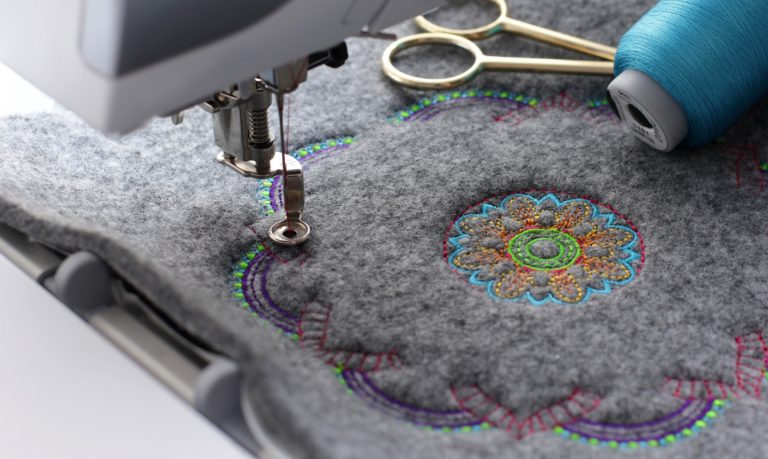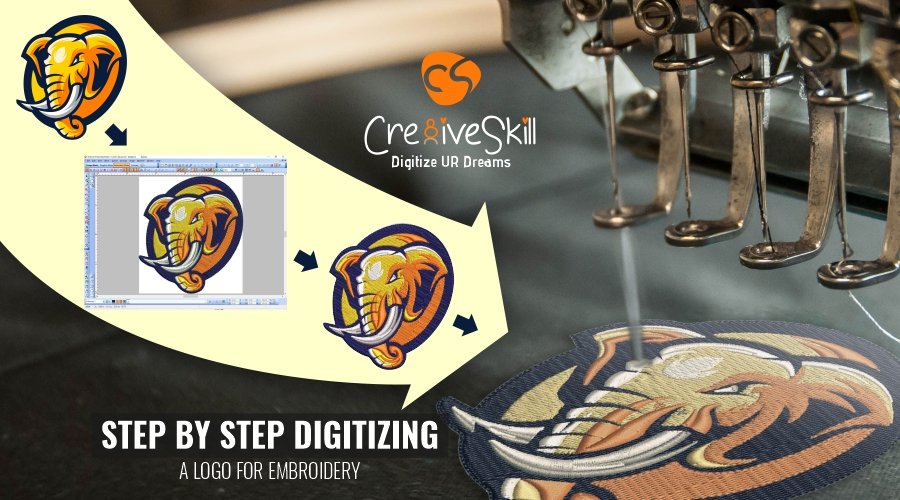Professional Digitizing for Embroidery: Fast and Reliable Service
Wiki Article
Simplifying the Art of Needlework Digitizing: Step-by-Step Guide
Embroidery digitizing is a meticulous craft that requires accuracy and creative thinking. As innovation continues to development, the digitization procedure has come to be more available, permitting lovers to bring their complex layouts to life easily. In this overview, we will unravel the complexities of embroidery digitizing, damaging down each step methodically to simplify the process and empower both newbies and experienced embroiderers alike. Keep tuned to find how you can streamline this elaborate art form and change your creative visions right into wonderfully stitched masterpieces.Comprehending Needlework Digitizing Software
Embroidery digitizing software program acts as a crucial tool for changing intricate styles right into digital styles suitable with needlework machines, assisting in precise stitching and personalization. This customized software program enables customers to import various image data styles, such as JPG or PNG, and transform them right into embroidery machine-readable formats like DST, EXP, or PES - Digitizing for Embroidery. By using functions like stitch editing and enhancing, underlay options, and thread color choice, digitizing software program makes it possible for users to control every element of the style procedureAdditionally, progressed needlework digitizing software offers tools for creating complex designs, adjusting stitch thickness, and incorporating elaborate details. Individuals can also preview the design before stitching it out, making sure accuracy and minimizing errors. Furthermore, many software application programs supply automated functions that assist improve the digitizing process, conserving time and initiative.
Recognizing the abilities of embroidery digitizing software application is important for attaining top quality cause embroidery jobs. By grasping this tool, needlework fanatics and experts can unleash their imagination and bring intricate designs to life with accuracy and performance.

Picking the Right Layout Data
After acquainting yourself with the abilities of embroidery digitizing software application, the following crucial action in the process is picking the appropriate style documents for your project. Digitizing for Embroidery. When picking a design data for needlework digitizing, it's important to consider the complexity of the layout, the dimension of the end product, and the sort of textile you will certainly be functioning withFor complex styles with fine details, a high-resolution photo or vector documents is advised to make sure that the embroidery device can accurately replicate the style. In addition, the size of the last item plays a substantial duty in selecting the right design documents. Bigger styles may require greater resolution data to preserve quality and sharpness.
Moreover, the type of textile you will certainly be embroidering on influences the option of design data. Various materials might need changes in the design data to make certain that the stitches are effectively aligned and the design looks like intended. By very carefully choosing the appropriate design data based on these elements, you can set yourself up for an effective embroidery digitizing procedure.
Digitizing Devices and Techniques
Using specialized software program and accuracy techniques, digitizing tools are important in changing detailed layouts right into embroidery-ready files. Embroidery digitizing software program, such as Wilcom, Hatch, or Embrilliance, gives the essential system to transform artwork right into stitch data. These programs supply functions like stitch editing and enhancing, underlay choices, and text tools to ensure the style converts flawlessly onto fabric.Among the essential techniques in digitizing is developing a clear course for the embroidery machine to follow. This involves digitizing each component of the design with accuracy, determining stitch types, thickness, and directions. By making use of tools like digitizing tablets or software-specific plugins, embroiderers can achieve a high level of precision in their digitized layouts.
Moreover, grasping the art of rug stitching is essential for producing top quality needlework. Underlay stitching maintains the material and produces a foundation for the layout, making certain that the end product is both visually appealing and long-lasting. By recognizing these digitizing devices and strategies, embroiderers can raise their craft and bring elaborate company website styles to life with precision and performance.
Personalizing Stitch Types and Instructions
The choice of stitch types can substantially impact the general look and appearance of the embroidered style. By tactically combining these stitch types, embroiderers can achieve depth and measurement in their layouts.Furthermore, the direction of stitches plays a vital function in enhancing the visual allure of the last embroidery. Numerous stitch instructions can include structure, emphasize specific aspects, and produce visual passion. For instance, altering the angle of stitches can imitate movement or natural patterns like fur or plumes. By experimenting with various stitch angles and patterns, embroiderers can bring their styles to life with remarkable detail and details. Mastering the art of tailoring stitch types and directions equips embroiderers to unleash their creative thinking and raise the quality of their job.
Screening and Refining Your Digitized Layout
To ensure the accuracy and high quality of your digitized design, complete testing and refinement are essential steps in the needlework digitizing process. When you have finished the digitization of your layout, it is important to examine it before waging the actual needlework. Evaluating permits you to recognize any type of potential problems such as thread breaks, sew thickness problems, or design distortions that might impact the result.
After screening, it is very important to refine your digitized design based upon the comments from the test sew-out. This may include tweaking sew setups, readjusting densities, or making adjustments to the general style to achieve the wanted end result. By iterating via screening and refinement, you can tweak your digitized layout to excellence before relocating forward with the why not check here actual needlework procedure.
Final Thought
Finally, mastering the art of needlework digitizing requires a thorough understanding of the software program, choosing the ideal style file, utilizing digitizing devices and techniques, tailoring stitch types and instructions, and screening and fine-tuning the digitized design. By adhering to these steps, embroiderers can simplify the digitizing process and create high-grade embroidered styles with accuracy and efficiency.Report this wiki page